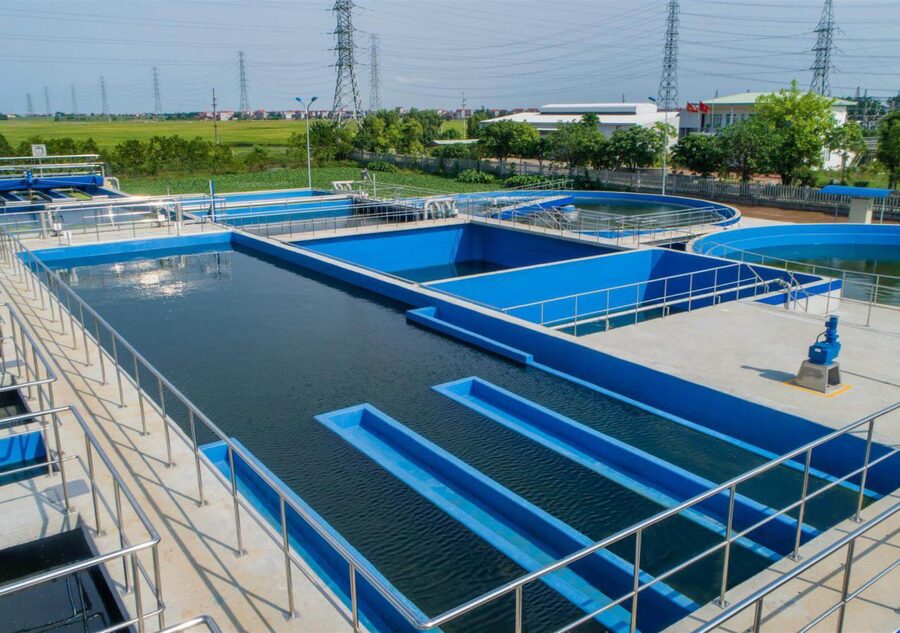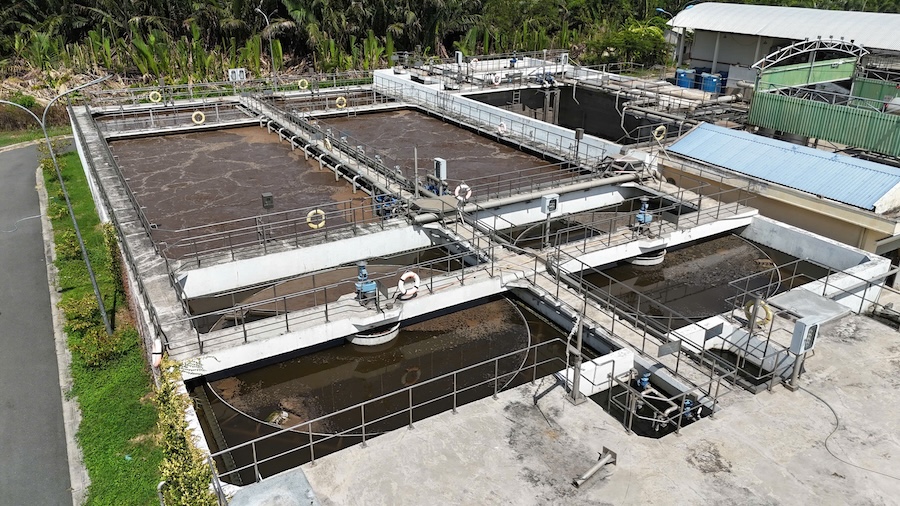In the food production process, the amount of wastewater generated each day can reach tens or even hundreds of cubic meters. If not properly treated, this wastewater can cause serious environmental pollution and directly affect public health. Therefore, food factory wastewater treatment is not only a mandatory requirement but also a responsibility that businesses must uphold for the sake of society and sustainable development.**
1. Sources of Wastewater in Food Processing Plants
Wastewater in food factories originates from various stages of production, depending on the specific type of processing, such as meat and fish, dairy, fruits and vegetables, beverages, or confectionery. The main sources include:
-
Raw material pre-processing steps like washing, blanching, and scalding, which generate wastewater containing soil, debris, and a portion of organic matter.
-
Main processing stages such as grinding, pressing, fermenting, cooking, and pasteurization release large volumes of wastewater rich in residues, sugars, proteins, starches, fats, and high concentrations of dissolved organic compounds.
-
Cleaning activities of workshops, equipment, and tools using water and cleaning chemicals contribute significantly to the overall wastewater volume, carrying fats, food particles, and detergents.
Domestic wastewater from employees is also a considerable component.
A common characteristic of food factory wastewater is its high organic content, reflected in elevated BOD₅ and COD levels. In addition, suspended solids (TSS) are often present in high concentrations, complicating treatment processes. The pH can vary widely—from acidic to alkaline—depending on the production technology and chemicals used.
2. The Importance of Treating Food Factory Wastewater
Investing in and operating an efficient wastewater treatment system for food factories provides substantial and multi-dimensional benefits. It is essential for environmental protection, preventing contamination of surface and groundwater sources, preserving aquatic ecosystems, minimizing odor, and improving air quality. At the same time, wastewater treatment safeguards public health by eliminating pathogens and harmful chemicals that may enter the food chain or cause illness through direct exposure.
3. Challenges in Food Factory Wastewater Treatment
Food factory wastewater treatment poses several challenges:
-
High concentrations of organic pollutants (BOD, COD), fats, and suspended solids (TSS) require robust and effective treatment technologies.
-
Large fluctuations in flow rate and wastewater composition due to shift operations and seasonal production variations make stable system design and operation difficult.
-
Diverse wastewater characteristics depending on the food type (dairy, beer, meat, seafood, starch, etc.) necessitate customized treatment solutions.
-
High initial investment and operating costs (electricity, chemicals, labor, sludge treatment) can be a financial burden. Limited land availability also poses a constraint, especially for plants with restricted space.
-
Large amounts of sludge are generated and must be treated and disposed of in compliance with regulations, which adds to the cost.
-
System operation and maintenance require skilled personnel with technical expertise and hands-on experience.
4. Food Factory Wastewater Treatment Methods
4.1. Preliminary Treatment
This stage focuses on removing large suspended solids, coarse materials, and part of the fats and impurities through mechanical and physical means. Common facilities and equipment include coarse and fine screens for removing large and small debris, grit chambers for separating inorganic particles like sand, grease traps to remove floating substances with lower density than water, and sometimes cooling towers to adjust wastewater temperature.
-
Advantages: Simple design and operation, no advanced technical knowledge required.
-
Disadvantages: Only effective for removing coarse, large-sized pollutants; dissolved and colloidal organic substances remain largely untreated.
4.2. Physicochemical Treatment
This method enhances the removal of dissolved organics, suspended solids, and some heavy metals that mechanical methods cannot address. The principle involves adding chemicals to alter the physical-chemical properties of pollutants, making them easier to separate from the water. Typical technologies include **coagulation and flocculation**, where agents like alum, ferric salts, or polymers are added to neutralize particle charges, allowing them to form larger flocs that can settle out.
-
Advantages: Effectively removes COD, BOD, TSS, and especially phosphorus — a common and regulated parameter in food wastewater.
-
Disadvantages: Requires skilled operators to manage chemical dosages accurately. Chemical usage can be costly, and chemical sludge must be managed appropriately.
4.3. Biological Treatment
This is considered the core and most effective method for treating biodegradable organic matter in food wastewater. **Anaerobic technologies are suitable for high-strength organic wastewater and can help reduce load while generating biogas for energy recovery.
-
Advantages: High efficiency in reducing COD, BOD, TSS, ammonia, and nitrate. Lower operating costs (except for aeration) and minimal environmental risk.
-
Disadvantages: Biological systems are sensitive to environmental changes. Optimal operation requires control over pH, temperature, dissolved oxygen, nutrient ratios, alkalinity, and technology stability.
4.4. Tertiary (Polishing) Treatment
This final stage employs advanced filtration (such as sand filters, activated carbon, membrane filtration) to thoroughly remove residual suspended solids and dissolved substances. **Disinfection** using chlorine, ozone, or UV light is also applied to eliminate pathogens. In some cases, maturation ponds are used to further stabilize water quality through natural processes.
-
Purpose: To ensure the remaining pollutant levels — already low after previous stages — are reduced to legal discharge limits.
-
Note: Although the relative removal efficiency at this stage is lower, it is crucial for achieving compliance with discharge standards.
Modern wastewater treatment technologies are highly advanced and innovative
Investing in a well-designed food factory wastewater treatment system not only ensures legal compliance and environmental protection but also moves businesses toward a circular and sustainable economy. If your enterprise is looking for a reliable, experienced partner in designing, building, and operating food wastewater treatment systems, Đại Nam — with a team of leading experts and cutting-edge technology — is committed to delivering comprehensive, cost-effective, and efficient solutions to support your sustainable growth.

